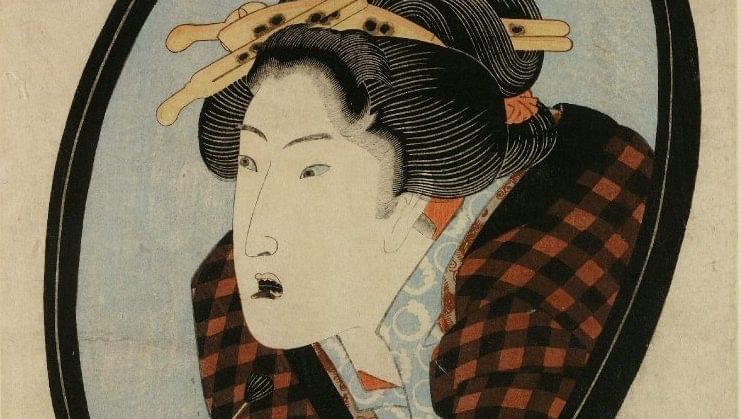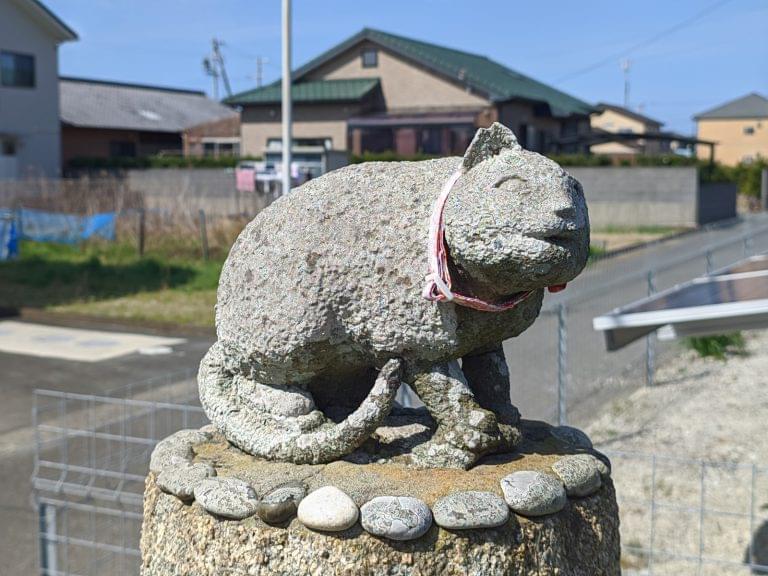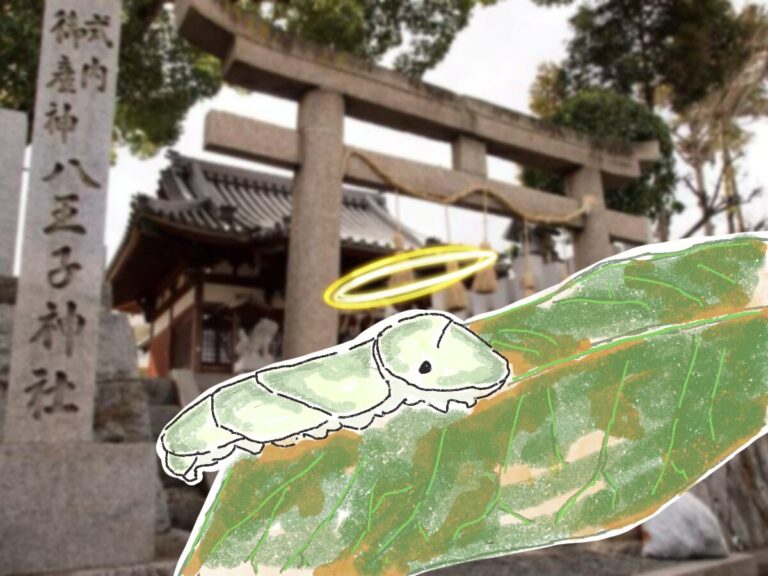Hey hey, this is Thersa Matsuura, author of the book of Japanese folklore and coming this fall 2025, the Yōkai Oracle deck, which you can pre-order if you’d like. I’m here to share with you all those hidden, fascinating, and sometimes frightening corners of old Japan. Come with me as I explore strange superstitions, creepy creatures, and cultural curiosities right here on Uncanny Japan.
Have you ever woken up in the middle of the night, mind racing, with a sudden and urgent thought? I wonder who the first samurai was, and then a couple hours later, still no signs of sleep. Things have escalated too. I wonder if severed heads can fly.
Well, isn’t that a coincidence? That’s exactly what I want to talk to you about today.
The Legend of Japan’s First Samurai
Today I’m going to tell you about the fierce, the legendary, the wild, Taira no Masakado, who has been dubbed the first samurai. Was he a bad guy? Was he a good guy? And yeah, we’ll get into airborne heads too, and curses.
You know how Japan loves three great things, like “Sandai Yūrei” — Three Great Ghosts, Episode 157? And we’ve talked about all three of them here. There’s Oiwa in the story “Yotsuya Kaidan,” Episode 42. Okiku in the story “Bancho Sada Yashiki,” Episode 25. And Otsuyu in “Botandōrō,” the peony lantern, Episode 158. But there’s also “Sandai Reizan,” Three Great Sacred Mountains, and “Sandai Keikan,” Three Great Scenic Views. There’s even “Sandai Hikyōeki,” Three Great Remote Train Stations. There are a lot. And in there, there’s “Sandai Onryō,” Three Great Grudge-Holding Spirits.
If you thought it was a little unfair that the three great ghosts were all women, well, the three great onryō, or vengeful spirits, are all men. And one of those angry ghosties is Taira no Masakado.
From Imperial Descendant to Rebel Leader
Taira no Masakado, often called the first samurai, was born around 903 AD, and he was a descendant of Emperor Kanmu. His grandfather, Prince Takamochi, was a son of that emperor. However, to mitigate the financial burden of supporting a large imperial family, the emperor would occasionally demote, so to speak, some of his sons and grandsons. So instead of being a descendant of the gods, he gave him the name Taira and made him a regular person.
So Taira no Masakado was born around what is now Ibaraki Prefecture, and he served in the imperial Heian court in Kyōto for a while, before returning to his home in Shimōsa Province, which is present-day Tōkyō. Everything was fine until it wasn’t.
Suddenly, all of Masakado’s uncles, alongside some men from the Minamoto tribe, started a fight with him. The details are murky, but it had to do with land disputes. Some say it was about women too. Masakado fought back and he beat them all.
But instead of just winning and going home, he got a little carried away. He began conquering other provinces too. Eight of them, in fact. And when he had taken over eight entire provinces, he declared himself the new emperor. He called himself “Shinnō” and said that the gods had given him a mandate to rule eastern Japan.
This, as you can imagine, did not go over well with the actual emperor in Kyōto. The emperor issued an imperial decree calling Masakado a rebel and enemy of the state. He sent armies to crush the rebellion. And in 940 AD, Taira no Masakado was killed in the Battle of Kojima by an arrow to the head, shot by Fujiwara no Hidesato. His severed head was brought to Kyōto and displayed as a warning to other potential rebels.
The Flying Severed Head: Supernatural Revenge
But the story doesn’t end there. Legend says that after several months, Masakado’s head, still perfectly preserved, opened its eyes and began to speak. It cursed the emperor and all who had betrayed him, and then it started to glow. The head lifted itself into the air and flew back toward his homeland in the east.
As it flew, it spread plague and disaster wherever its shadow fell. The head eventually landed in what is now central Tōkyō, in a small fishing village called Shibasaki. The villagers were terrified, but they built a shrine around it to appease the angry spirit.
Modern Tokyo and the Vengeful Spirit
That shrine still exists today and is known as Kanda Myōjin. It’s one of the most important shrines in Tōkyō, and it’s dedicated to three deities, one of whom is Taira no Masakado. He’s worshipped there as a protector deity of Tōkyō and as a god of business success and victory in battle.
The shrine is particularly popular with salarymen and business owners who come to pray for success in their careers. There’s also another shrine called Masakado-zuka, or Masakado’s Mound, which is said to mark the exact spot where his head landed.
This place is considered to be one of the most spiritually powerful and dangerous places in all of Japan. It’s located right in the heart of the financial district, surrounded by skyscrapers and office buildings. But despite being incredibly valuable real estate, no one dares to build on it.
There have been several attempts over the years to relocate or develop the site, and every single attempt has ended in disaster. In 1923, the government tried to turn it into a park. The construction workers kept getting injured, and then the Great Kantō Earthquake struck. In 1940, exactly 1,000 years after Masakado’s death, the government tried again. This time they wanted to build government offices on the site. The construction chief died mysteriously, and several workers were seriously injured. The project was abandoned.
In the 1960s, they tried to build a parking lot there. Again, workers were injured, and strange accidents kept happening. The project was scrapped. Today, the site is maintained as a small shrine, and major corporations in the area regularly make offerings to keep Masakado’s spirit happy. Every morning, fresh flowers and offerings are placed at the shrine by local businesspeople. They know better than to anger the first samurai.
Legacy of the First Samurai: Cultural Impact
But what makes Taira no Masakado so significant isn’t just his legendary curse. He’s considered the first true samurai because he was the first warrior to challenge the imperial system directly and create his own independent military government. His rebellion established many of the precedents that would later be followed by the shōgun and other military rulers. He showed that it was possible for a warrior to seize power through military might rather than imperial appointment.
In many ways, he paved the way for the rise of the samurai class and military rule that would dominate Japan for the next 700 years. So while his rebellion ultimately failed, his legacy lived on. He became a symbol of resistance against tyranny and injustice, and his story has been retold countless times in Japanese literature, theater, and film.
He’s often portrayed as a tragic hero who stood up against a corrupt system but was ultimately brought down by treachery and betrayal. And his supernatural revenge serves as a warning to those in power: treat people fairly, or face the consequences.
There’s something else I find interesting about Taira no Masakado and his connection to Tōkyō. You see, Tōkyō wasn’t always called Tōkyō. It used to be called Edo. And Edo literally means “estuary” or “bay entrance.” It was named after its location at the mouth of several rivers flowing into Tōkyō Bay. But before it was Edo, the area was known as Musashi Province, and it was part of Masakado’s territory.
So in a very real sense, the spirit of the first samurai still watches over the land he once ruled. And maybe that’s why Tōkyō has always been such a center of power and ambition. Maybe it’s because it’s blessed—or cursed—by Masakado’s presence.
There’s also a really nice connection to frogs in this story. You know those cute little frog figures you see all over Japan? Well, they’re often associated with returning home safely. And there’s a belief that if you carry a frog charm, it will help you return home safely, or help lost things return to you. The word for frog in Japanese is “kaeru,” which sounds the same as the word “kaeru,” meaning “to return.”
So when Masakado’s head flew back to his homeland, in a way, he was like a frog returning home. And now, over 1,000 years later, his spirit still protects that land. It’s a reminder that in Japanese culture, the connection between a person and their homeland can be so strong that it transcends death itself. Even a severed head will find its way home.
So that’s the story of Taira no Masakado, Japan’s first samurai and one of its most powerful vengeful spirits. From humble beginnings as a demoted prince to rebel leader to legendary ghost, his story embodies many of the themes that run through Japanese history: honor, betrayal, revenge, and the enduring power of the human spirit.
And whether you see him as a hero or a villain probably depends on your perspective. But one thing is certain: his legacy continues to this day, both in the shrines where he’s worshipped and in the skyscrapers that dare not disturb his resting place.
Next time you’re in Tōkyō, you might want to visit Kanda Myōjin or Masakado-zuka and pay your respects to the first samurai. Just don’t try to move his grave. Oh, and if you’re looking for good luck charms, you might want to pick up a little frog. They’re everywhere in Japan, and they’re said to help bring you safely home, just like Masakado’s head did all those centuries ago. Well, minus the cursing and glowing part.
I hope you enjoyed learning about this fascinating figure from Japanese history. If you want to learn more about Japanese folklore and culture, you can check out my books. “The Book of Japanese Folklore” is a beautifully illustrated guide to the supernatural world of Japan. And coming this fall is “The Yōkai Oracle Deck,” featuring sixty yōkai matched with wise Japanese idioms and phrases. You can pre-order it now to lock in the price. There’s a clickable thumbnail on the Uncanny Japan website labeled Oracle Cards.
Thank you for listening, and I’ll talk to you again in two weeks. Stay safe and well. Bye bye.






